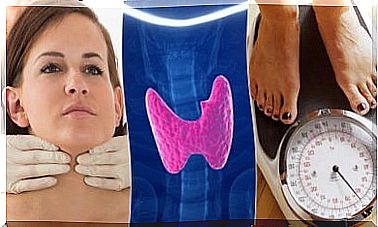What Are The Psychological Changes During Adolescence?
The psychological changes that occur during adolescence are what will transform your child into an adult capable of interacting with the world around him in a mature way.

Psychological changes during adolescence are part of everyone’s development. They are inevitable and do not have a unique pattern, although we can identify some common characteristics. Therefore, they do not happen in exactly the same way in all people. To support your children and help them cope, it is essential to understand that there is no need to exert pressure or force things on them.
The road to maturity is long, and while it can be difficult at times, it can be managed wisely. The key is to apply a good communication strategy at home that emphasizes respect and affection.
Next, we’ll tell you about psychological changes during adolescence and why it’s important to understand them.
Psychological changes during adolescence

During adolescence, the body undergoes significant changes that give rise to physical and mental characteristics of adulthood. You can distinguish different stages, which set the pace of your development process. These changes are completely normal and are part of human growth at this stage.
Development of thinking skills
Pre-adolescence ranges from 8 to 11 years old. This is the stage when the transition from childhood to adolescence occurs. In most cases, this coincides with the announcement of puberty. The physical changes that take place at this stage are remarkable and affect many parts of the body.
There are also great advances in the ability to think in terms of abstraction. Therefore, the adolescent is able to reflect on hypothetical situations or on logical and mathematical operations. Likewise, he tries to adapt to gender roles.
Strengthening the ability to think

At the beginning of adolescence, one manages to acquire the total capacity to think in abstract terms. However, this only happens if you have practiced this skill and received a good education.
In his gregariousness, the adolescent tends to value the opinion that others have of him. Image and aesthetics are considered to be an essential component of the young person’s own identity.
The main hormonal changes occur in early adolescence, between the ages of 11 and 15. These changes are very drastic, to the point where, when we leave this phase, the body is very different compared to preteen.
Culmination of the development of consciousness
The third and final stage is the end of adolescence and takes place between the ages of 15 and 19. At this stage, social consciousness eventually develops. They begin to spend a lot of time thinking and putting in place processes that are not limited to empirical experience.
Long term plans play a very important role for the teenager. The image, although still relevant, begins to cease to be one of the fundamental pillars of its identity.
Renunciation of the egocentricity typical of the previous stages
Much of the self-centeredness that defines childhood and the rest of adolescence is let go, although it does not go away completely. This makes it more likely that young people are interested in politics and social issues in general. Their existential goals become more related to self-transcendence.
The importance of personal appearance generally decreases. In some cases, aesthetics are still important and can develop issues such as anorexia.

Due to the large number of changes that are taking place, the topic of adolescence will continue to be a major research topic for modern psychology. You need to be supportive of your teen at all times and let them know they can count on you to answer all of their questions.
In case you are unsure of how to help your child when they are experiencing psychological changes during their teenage years, it is best to consult a specialist who can help you experience this process in the best way.









